Fermented foods are very popular these days and are definitely making a come back. Having Celiac disease, we are always looking for natural ways to keep our guts healthy and happy and with homemade sauerkraut, the taste and the benefits are amazing.
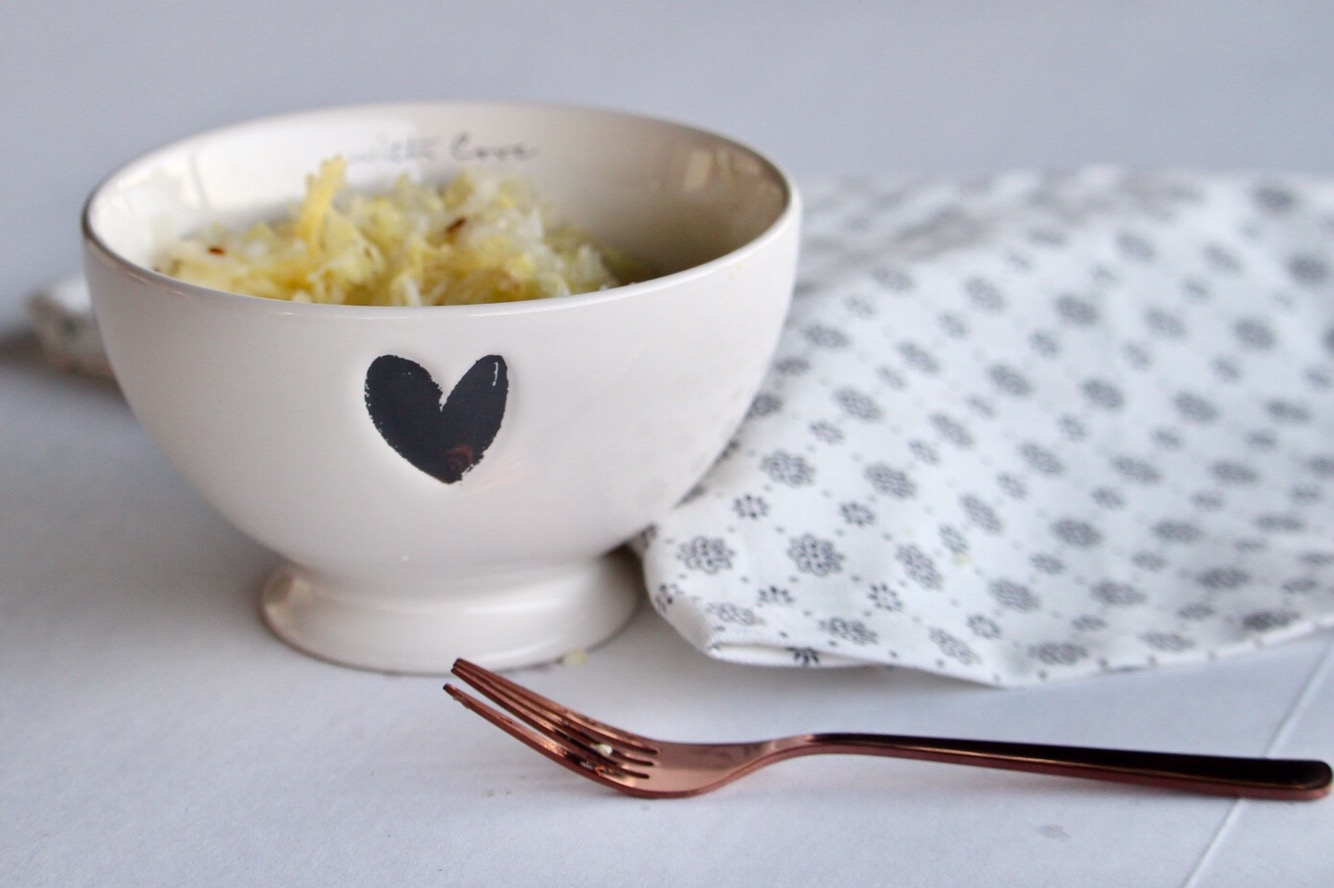
Making Sauerkraut was traditional in grandma Marge’s family, but we have only started to make it for the past couple of years. It tastes so much better than some bought sauerkraut brands, where the good bacteria is cooked or processed out.
The process of making sauerkraut at home is very cheap and easy. It will keep well in the fridge for a few months …. not that it will last that long as we love to eat it. Choose the freshest cabbage for juiciness and crispness. Make sure your fermenting crock is food safe and don’t use plastic containers to ferment the cabbage.
Ingredients:
- 2 pounds of cabbage
- 1 tablespoon of fine ground salt.
- 1 Tbsp of caraway seeds to each jar depending upon taste. (Personally the flavour when added is amazing)
Instructions:
Wash crock or mason jars with hot soapy water and rinse well. You can even use a vinegar rinse to get rid of any soap residue.
Wash cabbage and remove outer leaves. Cut out any bad spots from cabbage as well as the core. Keep a few large whole leaves for the top. Shred or slice the cabbage by hand. You could use a food processor, but it can chop the cabbage up in pieces that are way too small.
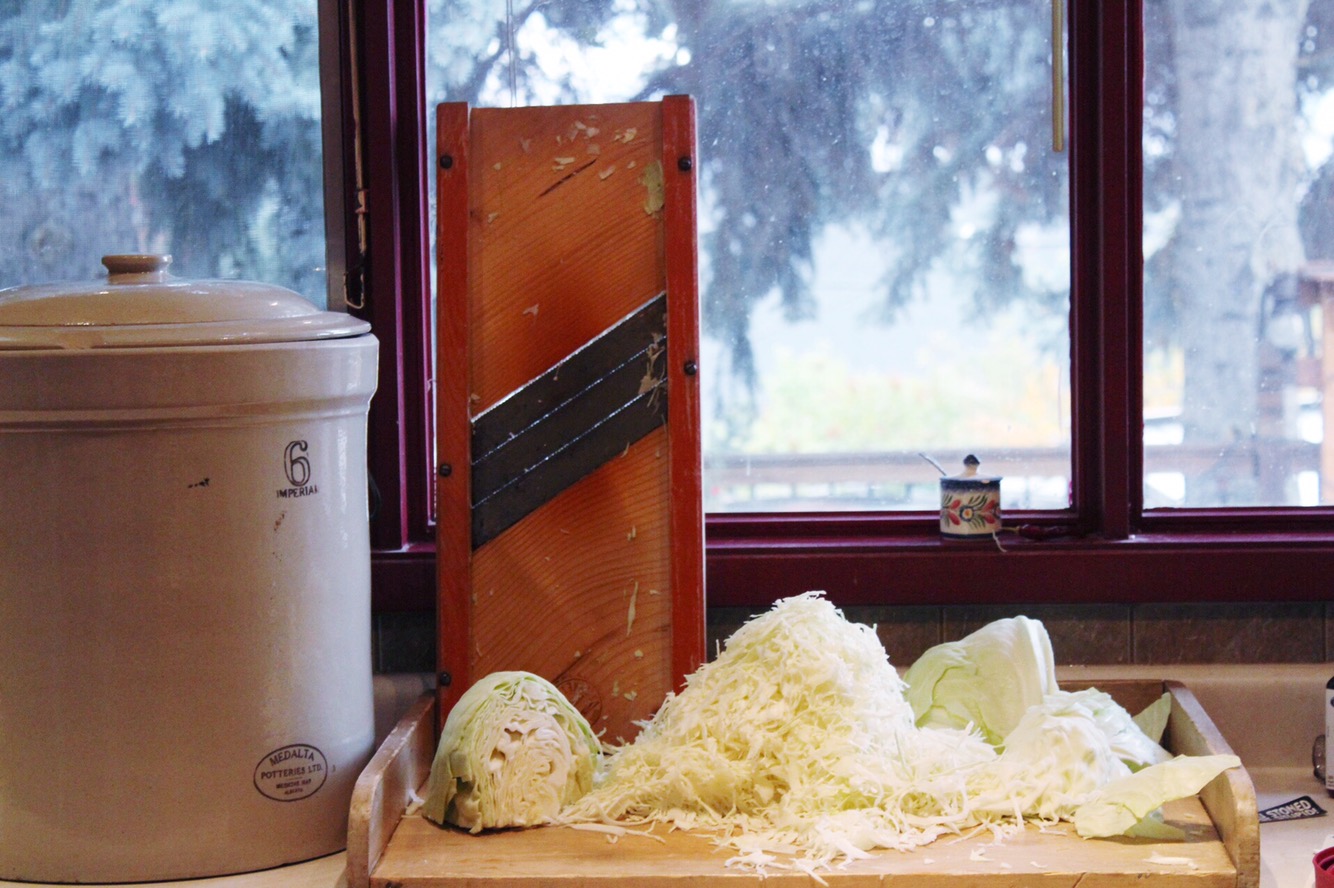
Sprinkle the salt over the cabbage and mix well. Leave to sit about five minutes – the salt will draw the liquid out of the cabbage.
Either massage the cabbage with your hands, or pound with a wooden spoon to further produce liquid.
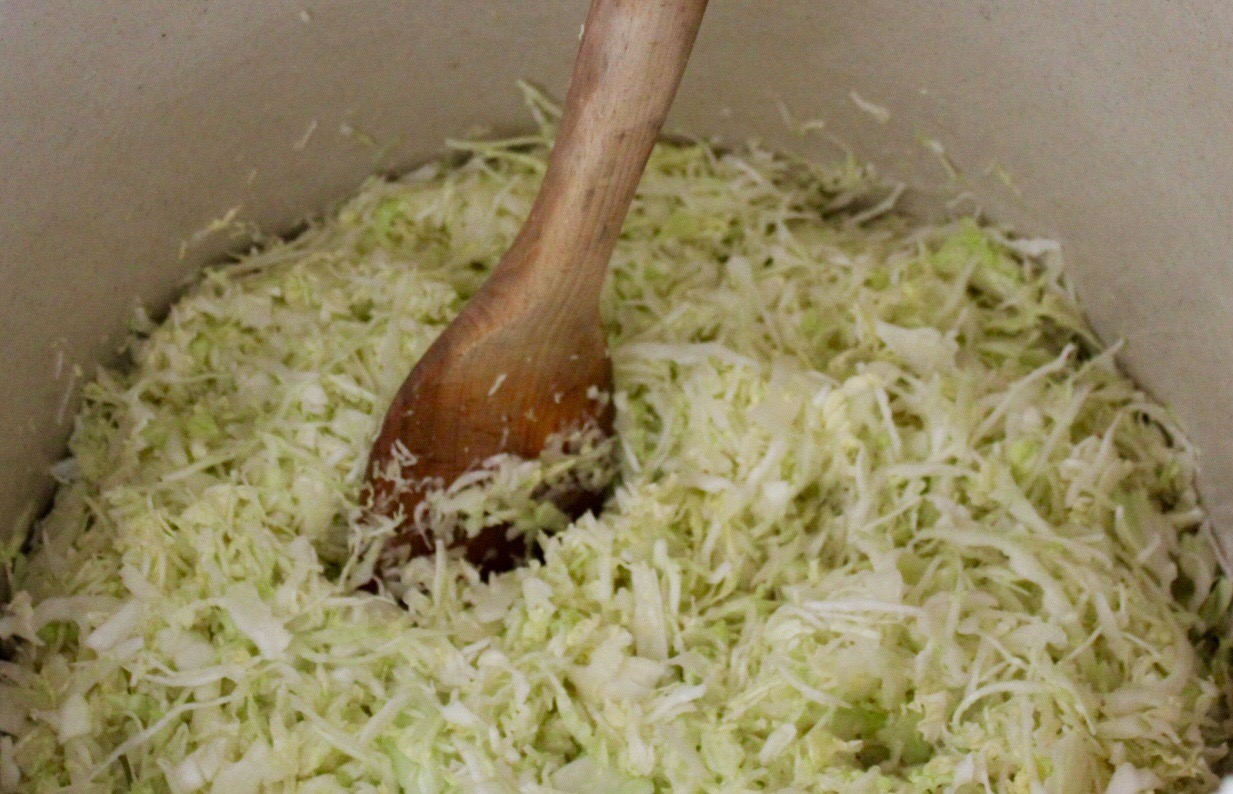
Put into crock or mason jars and pack cabbage down to remove any air. Cover with the large cabbage leaves you saved and lay a plate upside down over the top. Place a weight on top of the plate to submerge cabbage fully. You may have a smaller crock than the one we used and the proper weights.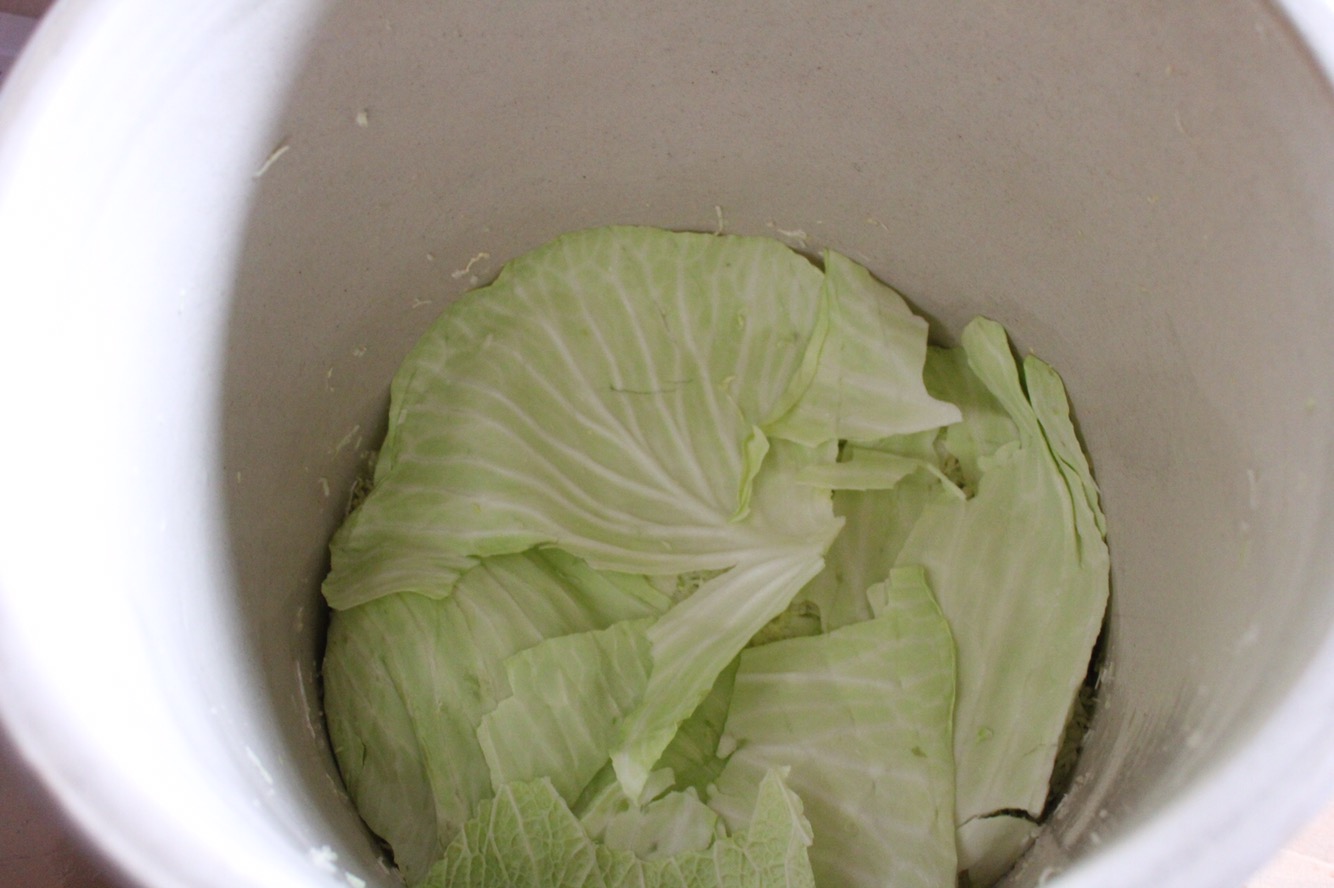
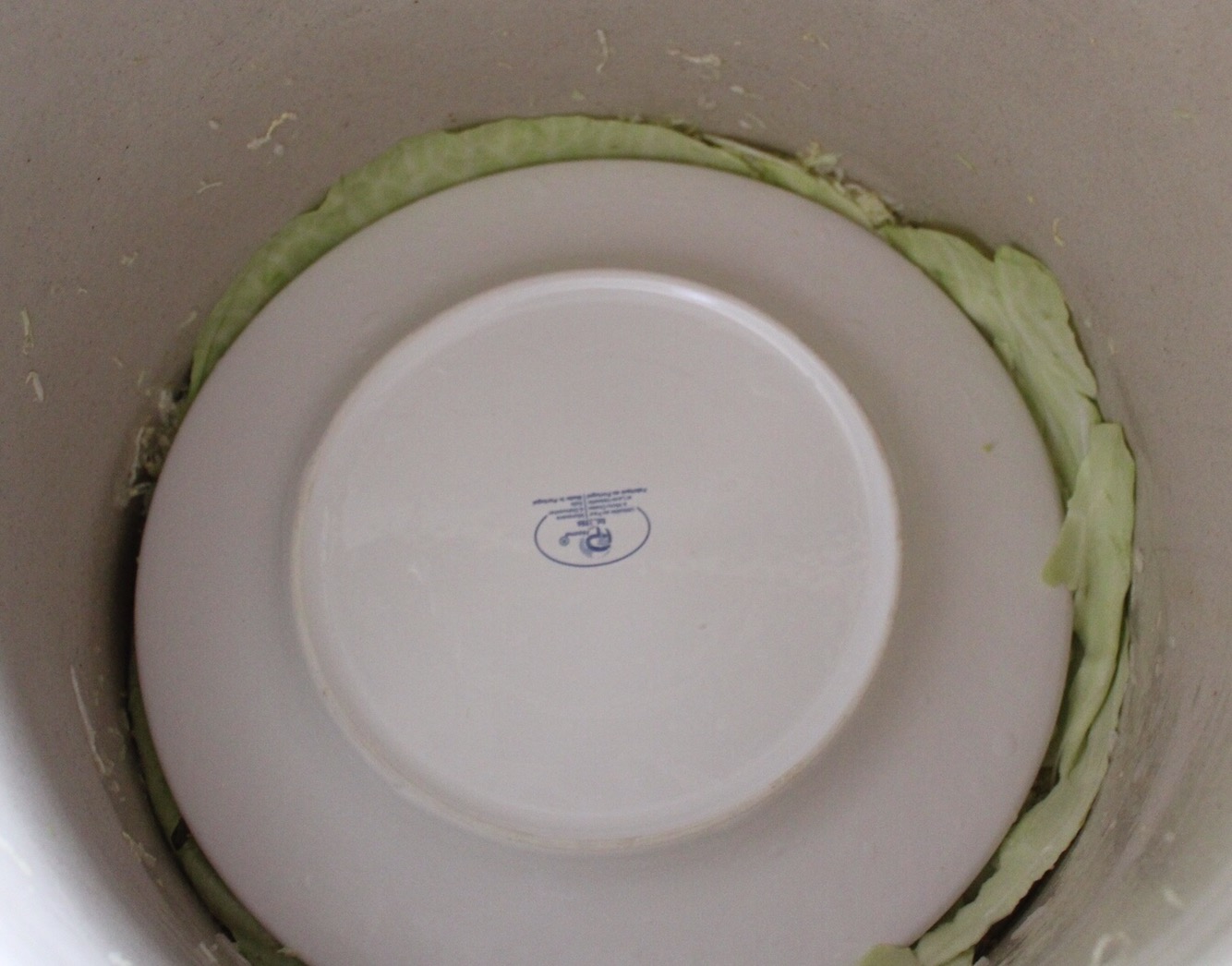
Check the following day to see if more brine is needed to completely submerge the cabbage. You may need to add 1 tsp of salt to a cup of water to achieve this.
After a week, or two or three. You will want to stop the fermenting process and move the sauerkraut to the fridge. Once you have achieved the desired level of fermentation, it is important to move the sauerkraut to the fridge, where it can last a couple of months if the sauerkraut is below the brine.
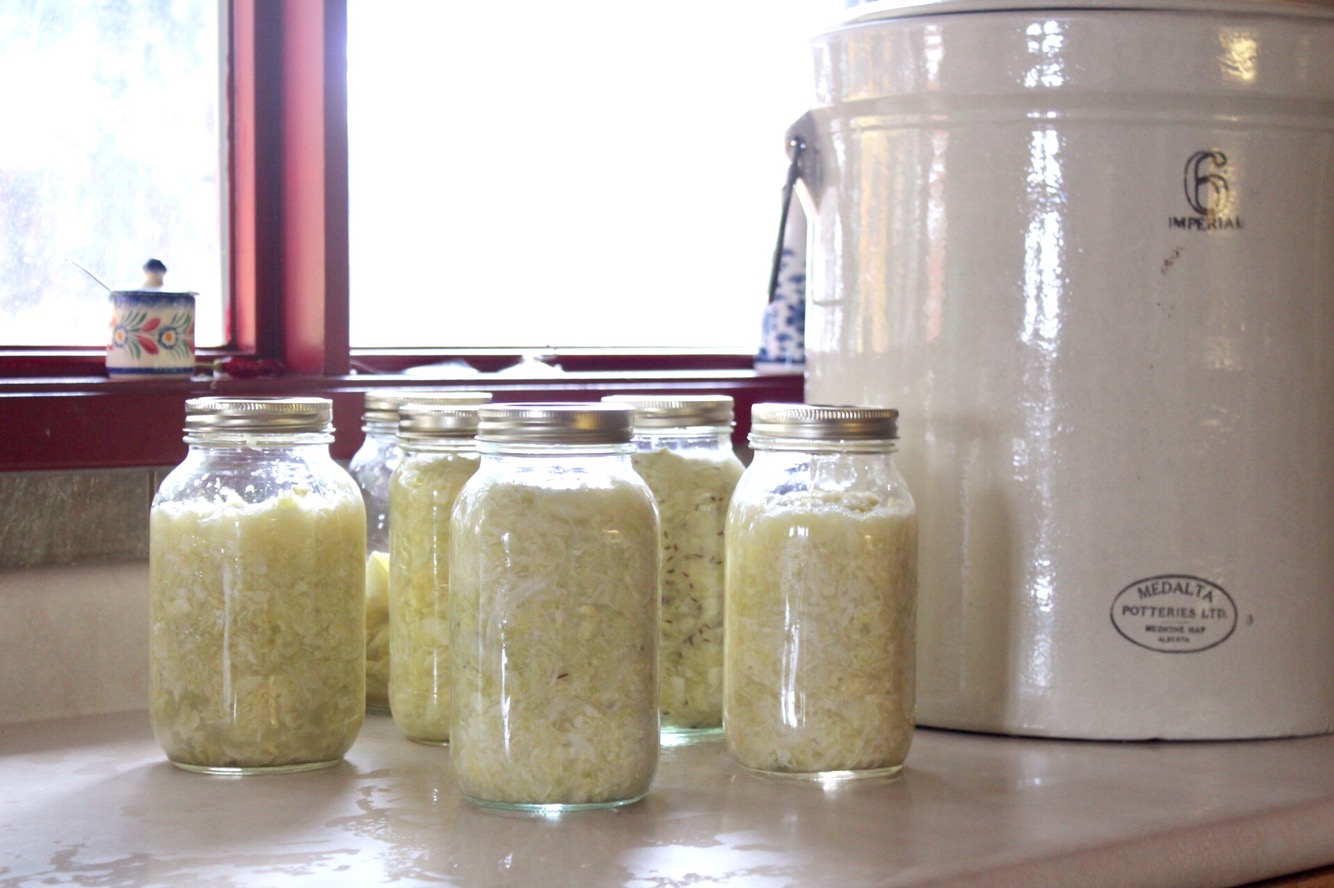
Keep in mind that the longer you ferment the cabbage, the softer and mushier it will get. It is all a matter of personal taste and ferment to your desire. Oh yes enjoy and remember everything in moderation
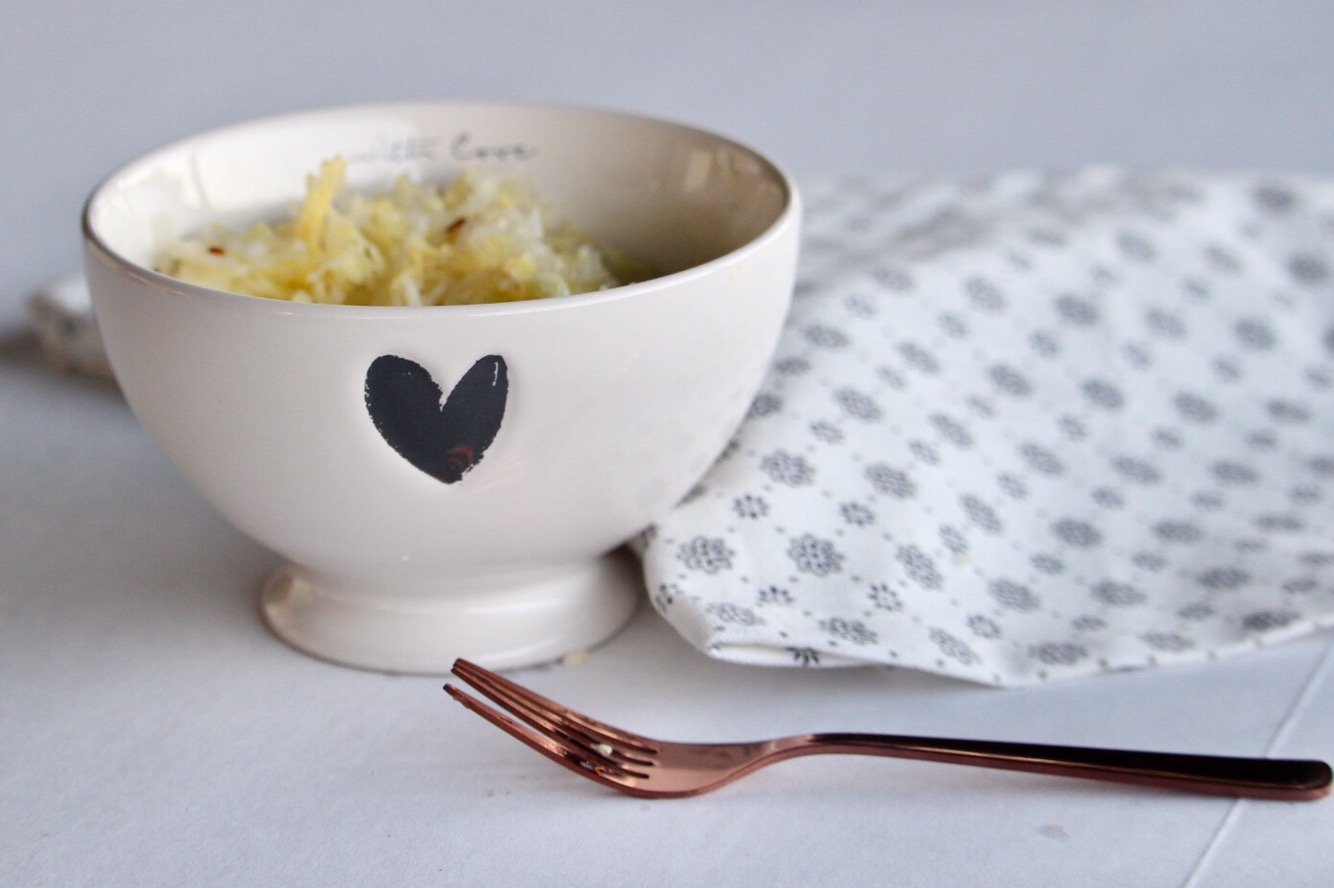
Be the first to comment